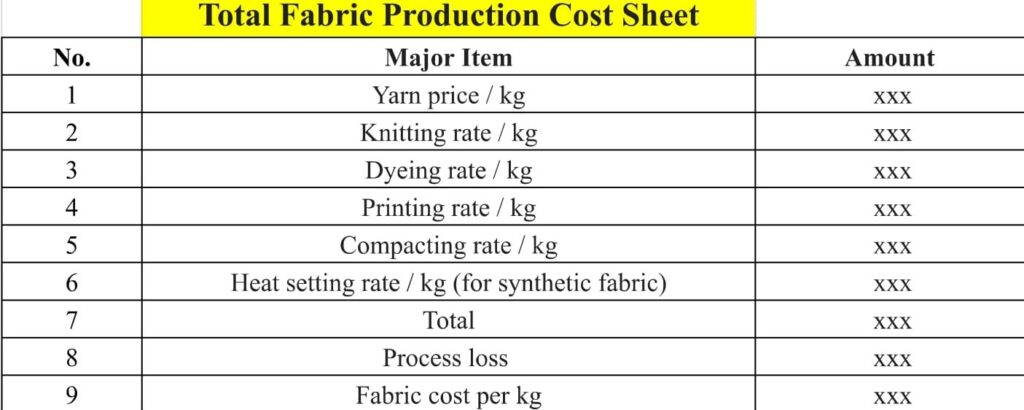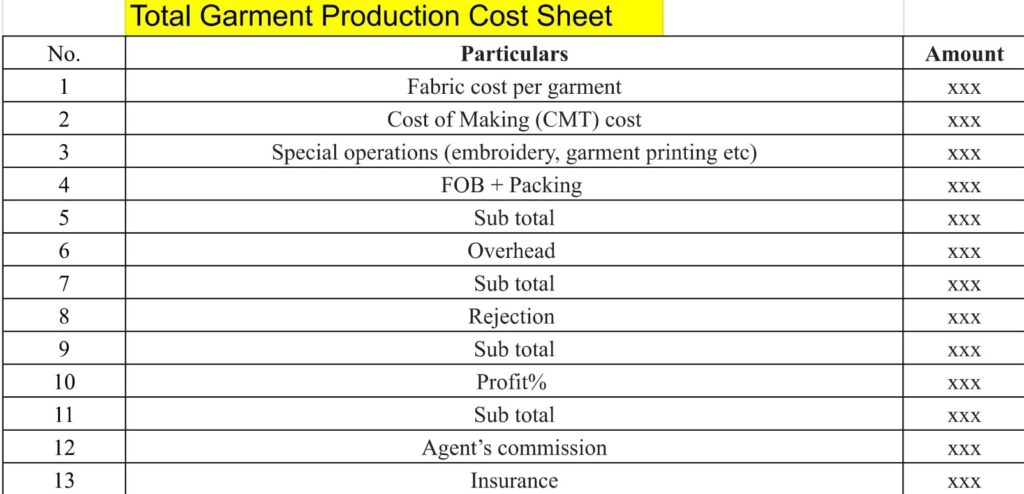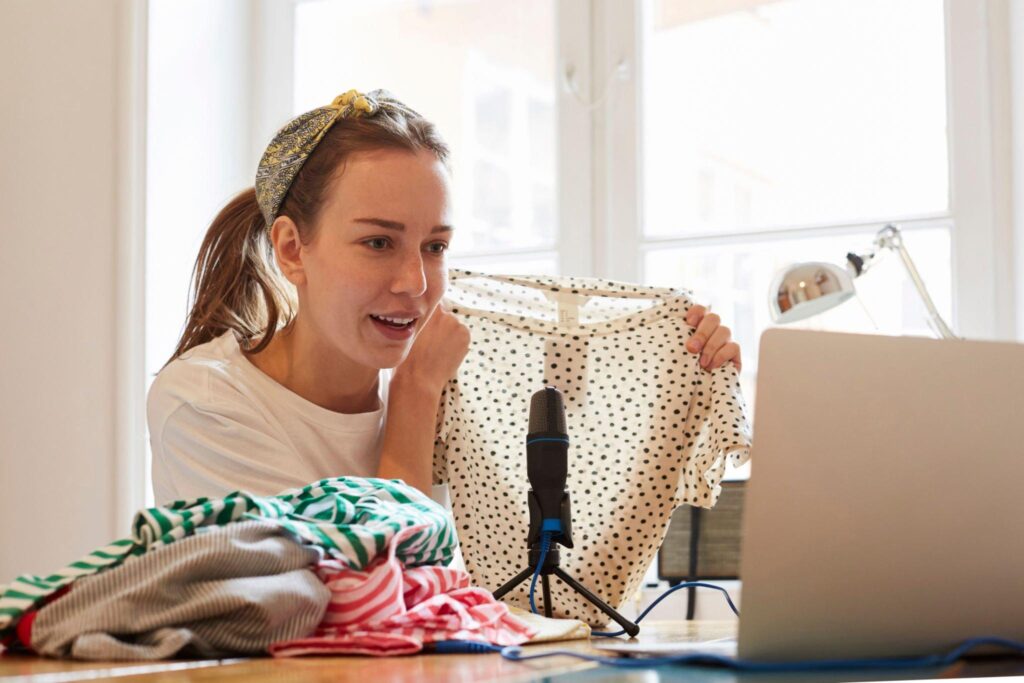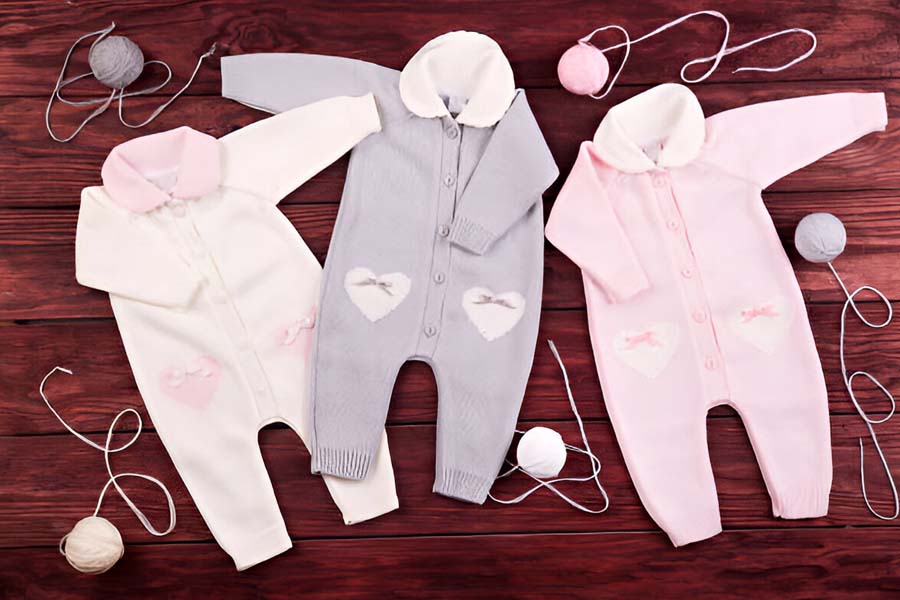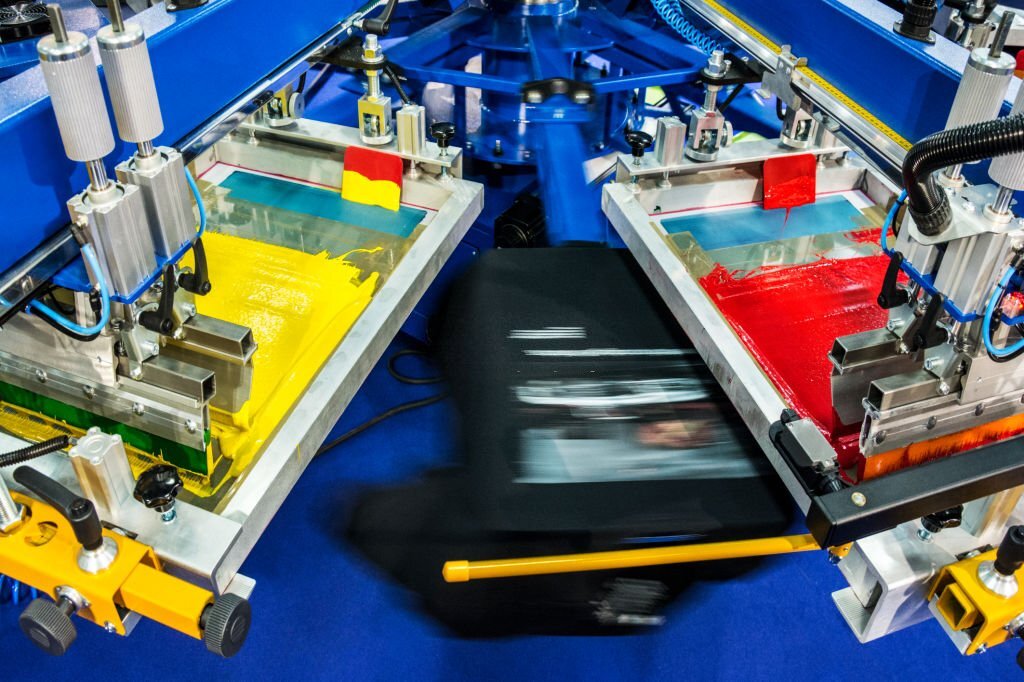
Building a fashion brand in Sydney, Australia can be an extremely challenging experience, especially given how competitive the industry can be. With so many entrepreneurs and designers out there looking to not only make a name for themselves but also a fair profit, it is crucial that you cannot just meet but even exceed the growing demands of your customers.
The only way to achieve this is to have a reliable clothing manufacturer by your side that can consistently provide you with high-quality garments. However, evaluating the right company to work with is not an easy task. After all, there are numerous options to choose from in the market and each one tends to offer different clothing products, quality levels, pricing, etc.
To this end, we’ve decided to help simplify the entire process for you by breaking down all the top 10 clothing manufacturers that you can work with in Sydney. So, let’s get right into it, shall we?
1. Hingto – Best manufacturer of custom-activewear garments
2. KJ Production House – Full-service manufacturer of extensive clothing products
3. OCC Apparel – Leading manufacturer of ethically-made branded apparel
4. Collins Textile Group – Top clothing manufacturer that uses premium fabrics
5. Always Trendin – Best choice for made-to-order garments with low MOQs
6. Sphinx Australia – Specialists in high-end custom-made clothing
7. Hotsprings – Reputable manufacturer of private label apparel
8. TopStitch Uniforms – Leading supplier of high-quality uniform wear
9. BABYLON Industries Pty. Ltd. – Clothing experts in embellishments and embroidery
10. Belle Marc – Trusted supplier of high-end tailored garments
Top 10 Clothing Manufacturers To Partner With In Sydney
Review our picks for the 10 most reliable Sydney-based clothing manufacturing companies below.
Hingto – Best manufacturer of custom-activewear garments
Hingto has specialized in the production of high-quality custom-activewear clothing for 13+ years. Within that time, they have managed to work with an extensive number of notable brands like Adidas, Lilybod, RVCA, and more. The manufacturer can also produce loungewear, swimwear, and even golfwear, which spans a wide range of products for both men and women such as shorts, jackets, tees, bras, jackets, etc.
The company is also capable of mass OEM production, as they have the equipment and manpower needed to produce 100,000+ custom pieces every month. They also make the production process easier for new and inexperienced brands, as their team of fashion-forward designers guide clients on how best to bring their ideas and concepts to life.
In addition, Hingto also has ready-made wholesale blank apparel for brands that are looking for quick turnarounds. Also, since they offer discounts for wholesale orders, brands are often able to save money by ordering more. It’s also worth noting that the company prioritizes the production of ethically and sustainably made garments, which is why they use natural fabrics such as hemp, bamboo, organic cotton, etc.
Pros
- Specializes in activewear products
- Ready-made wholesale clothing available
- Strong advocate of sustainable fashion
Cons
- MOQs can vary depending on the style and designs
- Not suited for high-end tailored garments
Order Activewear Clothing Products with Hingto >>>
KJ Production House – Full-service manufacturer of extensive clothing products
KJ Production House is a full-service clothing manufacturer that is managed by experienced industry experts dedicated to helping both small and large-scale brands bring their clothing collections to market. From production planning and scheduling, fabric sourcing and pattern making to marker making and cutting, the company has the resources and expertise to handle it all.
On top of that, its founder will usually oversee the entire production process to ensure that every order is managed in the most cost-effective and timely manner. It also helps that they employ highly experienced cutters, pattern makers, and machinists, which enables them to produce a wide range of garments such as activewear, swimwear, kidswear, and more.
The company also works with several off-shore manufacturing companies, which means that even if they are unable to produce your orders in-house, they will reach out to their network to bring any of your fashion ideas to reality. Plus, the manufacturer follows strict quality control checks, so each product off the line will only be cleared if it meets the fashion industry standard.
Pros
- Wide range of product options available
- High-quality custom-made garments
- Highly-personalized client experience
Cons
- Company is still relatively new
- No wholesale blank apparel available
Contact KJ Production House To Work With A Full-Service Clothing Manufacturer >>>
OCC Apparel – Leading manufacturer of ethically-made branded apparel
Launched in 2004, OCC Apparel is a well-respected manufacturer of blank wholesale apparel that is made up of a professional team of clothing designers and production experts. However, the company is especially well-known for its ethical manufacturing practices, which is why it makes sure to only utilize sustainable fabrics such as 100% organic cotton, bamboo, recycled materials, etc.
OCC Apparel also has an extensive network of manufacturing partners that are based offshore, which means that they are fully capable of handling any bulk orders in line with your requirements, timelines, and budget. In addition, they offer a wide range of clothing production options to choose from, such as screen printing, embroidery, heat transfers, etc.
Aside from that, the manufacturer also offers high-quality blank apparel that any brand can easily request to be relabeled and decorated as their own. From shirts, hats, leggings, and shorts to hoodies and more, the company has consistently worked with a huge number of established and independent brands to provide them with sustainable garments.
They also follow strict quality control standards and work efficiently to ensure that all orders are processed within the agreed timelines.
Pros
- Experts in ethically made clothing
- Wide manufacturing network
- Blank wholesale apparel available
Cons
- Production costs may be high
- May not accommodate low MOQs
Get Sustainably-Made Wholesale Clothing Products via OCC Apparel >>>
Collins Textile Group – Top clothing manufacturer that uses premium fabrics
Collins Textile Group is a family-led company that has been in the textile industry since 1954 and since then, it has continued to offer its clients an extensive collection of fabrics to design high-quality clothing for both men and women. From cotton, linen, silk and wool to polyester, they have you covered in every aspect to ensure that you can craft a wide assortment of garments with complete ease.
The company also has a strong reputation among several brands in the Australian market, which means that sourcing clothing materials from them can significantly benefit your brand image. The manufacturer is also experienced in crafting corporate and even schoolwear garments, so they can be relied upon should you need highly-detailed clothing on a mass scale.
Pros
- Experts in high-quality clothing fabrics
- Strong brand reputation in the industry
- Capable of mass-production
Cons
- No ready-made garments available
- Lack of finished product designs on website
Get High-Quality Fabrics and Clothing From Collins Textile Group >>>
Always Trendin – Best choice for made-to-order garments with low MOQs
If you need a manufacturer that can provide high-quality garments with low MOQs, then Always Trendin is a viable option to consider. The company works with a wide number of independent brands and designers to craft unique made-to-order garments that come with low minimums and can be customized as you please.
They also offer a wide range of production methods such as sublimation printing and embroidery. On top of that, all of their clothing fabrics are ethically sourced, which makes them an ideal sustainability partner. It also helps that their design team remains on hand to guide clients through the manufacturing process from start to finish.
Always Trendin also follows an eco-friendly method of producing garments by avoiding synthetic dyes and sticking to only using natural fabric dyes. They also ensure that they provide fast product turnarounds, which makes them a great choice should you ever find yourself dealing with a huge surge in consumer demand.
Pros
- High-quality made-to-order clothing
- Fast turnaround times
- Low minimum quantities
Cons
- No ready-made garments available
- Website shows no product design images
Secure Low MOQs on Made To Order Garments via Always Trendin >>>
Sphinx Australia – Specialists in high-end custom-made clothing
Sphinx Australia is a family-owned clothing manufacturer with over 30+ years of experience in the industry and specializes in producing high-end clothing for a wide range of brands in local and offshore markets. They also produce specialized workwear garments for official purposes such as defense, mining, government, and even emergency services.
In addition, the company is fully equipped with all the latest technology in clothing production, which means that they can manufacture your clothing locally according to your specifications and budget. On top of that, they are also capable of handling bulk OEM orders with fast turnarounds.
The manufacturer also does well to offer competitive pricing for their products and also offers various production services such as cutting & sewing, embellishment & badges, heat seal logo services, etc.
Sphinx Australia also provides its clients with pressing & packing services, as well as barcoding & labelling services.
Pros
- Bulk OEM production
- Competitive pricing
- Numerous clothing production services
Cons
Purchase High-End Custom Clothing In Bulk From Sphinx Australia >>>
Hotsprings – Highly reputable manufacturer of private-label apparel
With over 20 years of experience in the industry, Hotsprings is a highly reputable clothing manufacturer of private label clothing with a strong history of providing brands with diverse fashion solutions. From crafting custom-made garments to developing new fabric technologies, the company has built a reputation for itself, which is why they have continued to work with an award-winning portfolio of major Australian and internationally-based retailers.
The manufacturer is also committed to ethical sourcing and producing eco-friendly garments, be it casual wear, streetwear, tailored garments, etc. This, in turn, makes them an ideal partner for brands that are looking to promote sustainable fashion over the long term. In addition, the company does well to facilitate packaging and shipping, as well as offer competitive pricing and quick turnarounds for bulk orders.
Pros
- Innovative solutions
- Competitive prices
- Quick turnarounds
Cons
- Limited information on their products online
Work With Hotsprings To Acquire Quality Private Label Apparel >>>
TopStitch Uniforms – Leading supplier of high-quality uniform wear
When you need high-quality garments for official use in corporate, academic, or even government-related industries, TopStitch Uniforms is a top choice to consider. The clothing manufacturer has been in business for over 15 years and continues to offer an extensive range of men’s, women’s and even kid’s wear at highly competitive prices.
This includes custom-made products such as T-shirts, polos, blouses, safety wear, aprons, beauty tunics, etc. They also provide their clients with a wide range of production techniques such as superior embroidery, screen printing, and digital transfer services, so you can be confident that they have the right method to meet all your clothing needs.
TopStitch Uniforms also offers many types of ready-made workwear garments that can be easily customized with your branding. Plus, they offer additional clothing solutions such as garment repair and alteration services for products such as tailored shirts, trousers, suits, and even gowns.
Pros
- Multiple clothing production options
- Experts in highly-detailed garments
- Repair solutions
Cons
- Mass production costs may be high
- Limited to workwear clothing items
Obtain Well-Crafted & Detailed Garments From TopStitch Uniforms >>>
BABYLON Industries Pty. Ltd. – Clothing experts in embellishments and embroidery
BABYLON Industries Pty. Ltd. was founded in 1977 and ever since then, it has continued to be a leading manufacturer of clothing and embroidered products. The company has worked with various brands and even government agencies such as the police, ambulance, fire, defense, etc. Aside from embroidery, they also offer other production techniques such as digital printing and screen printing.
In addition, they offer a wide range of blank apparel products that can be easily customized to suit your branding needs. From polos, jackets, and hats to t-shirts, they have multiple options for both men and women that are readily available in different colorways. The manufacturer also provides custom alteration services and it’s also worth noting that they are also accredited by the ECA for their ethical clothing practices.
Pros
- Experts in garment embroidery
- High-quality clothing products
Cons
- Product prices are expensive
- Only produces workwear garments
Hire Clothing Embellishment Experts At BABYLON Industries Pty. Ltd. >>>
Belle Marc – Trusted supplier of high-end tailored garments
Established in 2016, Belle Marc is a manufacturer that produces high-quality Australian-made garments using a wide range of different fabrications such as knits, wovens, and more. The company is made up of an experienced team of designers, pattern-makers, and machinists who are ready and able to provide brands with guidance throughout the entire production process.
From T-shirts to tailored jackets, the manufacturer ensures that every garment is handled with extreme attention to detail. The company founder is even known to take a proactive approach to all orders by overseeing all aspects of the design process to production on every project. As a result, the manufacturer is often able to consistently deliver quality results with speed and efficiency each time.
It also helps that they provide business development and advisory roles for clients, which means that any new entrepreneurs and designers can get help on the business side of things.
Pros
- Experts in high-end tailored garments
- Has strong client relationships
Cons
- Not capable of bulk production
- Limited information on website
Build A High-End Tailored Clothing Collection With Belle Marc >>>
How Can You Find the Best Clothing Manufacturing in Sydney for Your Brand?
If you want to find a reliable clothing manufacturer in Sydney, one of the best places to start searching is online directories. Most search engines like Google and Bing will usually be able to provide you with a detailed list of reputable clothing manufacturers within the local area. However, most manufacturers don’t tend to update their websites regularly, so you may need to go through a few pages before you find the right match.
Another option to consider is attending local industry meet-ups and trade shows. These events can often be a great way to meet different clothing manufacturers in one convenient place. You will also be able to speak directly to the company representatives, which should give you a more clear picture of what they can offer you and your clothing brand.
Alternatively, you can go through Facebook or Slack groups for clothing-related communities. There are often several reputable e-commerce groups that are full of entrepreneurs and independent brands that can point you in the right direction. They will even be able to provide you with unique insights that can help guide you on choosing a reliable apparel factory.
Other options to consider include asking your professional or personal network for any recommendations, as some of them may know or be familiar with clothing manufacturing companies that you can partner up with.
Feeling Let Down by Sydney Clothing Manufacturers? Check Out Ludyway!
Using Sydney-based clothing manufacturers can be beneficial in many ways. After all, you won’t need to worry about shipping delays, product quality is guaranteed, and it’s often much easier to establish good relationships with the manufacturer since their physical offices are within reach. However, there are several challenges to consider as well.
For starters, working with Sydney-based manufacturers is likely to result in higher production costs, compared to what international manufacturers will typically offer. This is primarily because these companies have to pay higher wages, rent, utilities, taxes, etc. On top of that, most manufacturers in Sydney tend to have limited production capabilities in comparison to their offshore counterparts who are set up with far more advanced machinery and experienced clothing experts.
It’s also worth pointing out that most of these local manufacturers tend to import fabrics and materials from international markets like China and India. As a result, they are not always able to provide you with a wide range of products in the same way that internationally-based manufacturers like Ludyway can. To this end, it is often worth reaching out to such manufacturers first to see what they can offer before settling for a Sydney clothing manufacturer.
Conclusion
Hopefully, this article will have provided you with a fair amount of insight into which Sydney clothing manufacturers are worth working with. Each one has its specialties, benefits, and limitations, so you must take the time to review each one carefully until you manage to successfully narrow down the most suitable choice for your fashion brand.
This means taking into consideration important factors like product quality, order quantities, production capabilities, expertise, experience, and even budget. If all this sounds overwhelming, then we would advise reaching out to Ludyway. After all, the manufacturer effectively checks off all these boxes and more, which makes it a great partner to consider for anyone looking to launch a successful fashion brand.


